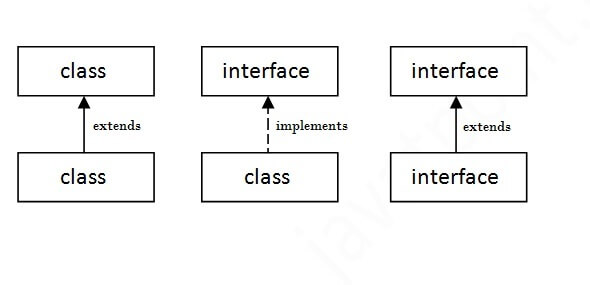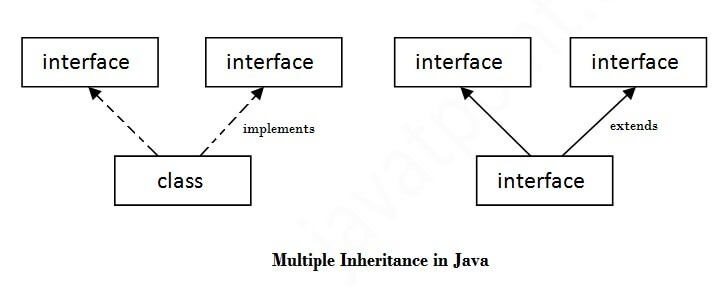Interface in Java
The interface in java is a mechanism to achieve abstraction. There can be only abstract methods in the java interface not method body. It is used to achieve abstraction and multiple inheritance in Java.An interface in java is a blueprint of a class. It has static constants and abstract methods.
Java Interface also represents IS-A relationship.
It cannot be instantiated just like abstract class.
Why use Java interface?
There are mainly three reasons to use interface. They are given below.
- It is used to achieve abstraction.
- By interface, we can support the functionality of multiple inheritance.
- It can be used to achieve loose coupling.
Java 8 Interface Improvement
Since Java 8, interface can have default and static methods which is discussed later.
Internal addition by compiler
The java compiler adds public and abstract keywords before the interface method. More, it adds public, static and final keywords before data members.
In other words, Interface fields are public, static and final by default, and methods are public and abstract.

Understanding relationship between classes and interfaces
As shown in the figure given below, a class extends another class, an interface extends another interface but a class implements an interface.

Java Interface Example
In this example, Printable interface has only one method, its implementation is provided in the A class.
Output:
Hello
Java Interface Example: Drawable
In this example, Drawable interface has only one method. Its implementation is provided by Rectangle and Circle classes. In real scenario, interface is defined by someone but implementation is provided by different implementation providers. And, it is used by someone else. The implementation part is hidden by the user which uses the interface.
File: TestInterface1.java
Output:
drawing circle
Java Interface Example: Bank
Let's see another example of java interface which provides the implementation of Bank interface.
File: TestInterface2.java
Output:
ROI: 9.15
Multiple inheritance in Java by interface
If a class implements multiple interfaces, or an interface extends multiple interfaces i.e. known as multiple inheritance.

Output:Hello
Welcome
Q) Multiple inheritance is not supported through class in java but it is possible by interface, why?
As we have explained in the inheritance chapter, multiple inheritance is not supported in case of class because of ambiguity. But it is supported in case of interface because there is no ambiguity as implementation is provided by the implementation class. For example:
Output:
Hello
As you can see in the above example, Printable and Showable interface have same methods but its implementation is provided by class TestTnterface1, so there is no ambiguity.
Interface inheritance
A class implements interface but one interface extends another interface .
Output:
Hello Welcome
Java 8 Default Method in Interface
Since Java 8, we can have method body in interface. But we need to make it default method. Let's see an example:
File: TestInterfaceDefault.java
Output:
drawing rectangle default method
Java 8 Static Method in Interface
Since Java 8, we can have static method in interface. Let's see an example:
File: TestInterfaceStatic.java
Output:
drawing rectangle 27
Q) What is marker or tagged interface?
An interface that have no member is known as marker or tagged interface. For example: Serializable, Cloneable, Remote etc. They are used to provide some essential information to the JVM so that JVM may perform some useful operation.
Nested Interface in Java
Note: An interface can have another interface i.e. known as nested interface. We will learn it in detail in the nested classes chapter. For example:
No comments:
Post a Comment